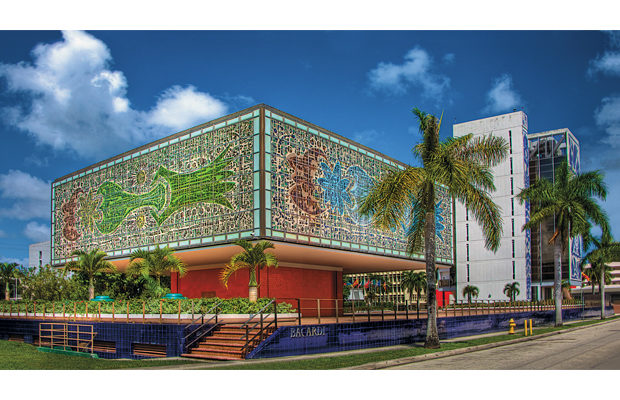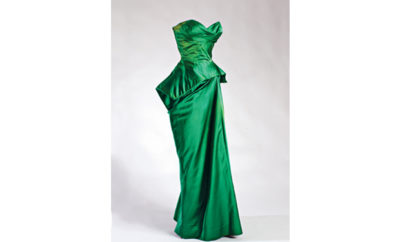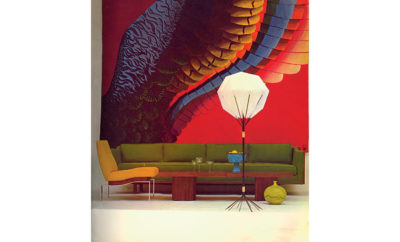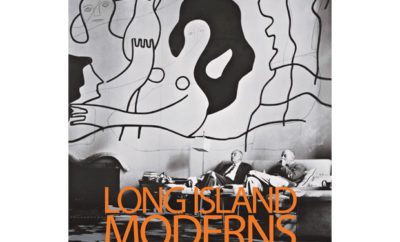
Feature
Mojito Modern

A panoramic view of the Bacardi Building complex.
To an architectural Miami landmark, we say “Salud!”
As cognoscenti from the world over flock to the Art Basel Miami Beach fair and its sister showcase, Design Miami/Basel, we wanted to pay tribute to a local icon that will delight both art lovers and design aficionados: the recently landmarked Bacardi complex on Biscayne Boulevard in downtown Miami. Familiar to city residents but hardly known to visitors, the two Bacardi buildings and the plaza on which they stand are a riveting marriage of flamboyant ornament and formal geometries—modernism with a tropical twist.
The Bacardi family left Cuba after the Castro revolution, and moved the firm’s U.S. headquarters to Miami. To design their new offices, Bacardi chose the Cuban-born architect Enrique Gutierrez. The eight-story tower, built in 1963, is both an aesthetic and an engineering tour de force. The north and south facades of the tower are overlaid with two huge blue-and-white ceramic tile murals in floral patterns devised by As cognoscenti from the world over flock to the Art Basel Miami Beach fair and its sister showcase, Design Miami/Basel, we wanted to pay tribute to a local icon that will delight both art lovers and design aficionados: the recently landmarked Bacardi complex on Biscayne Boulevard in downtown Miami. Familiar to city residents but hardly known to visitors, the two Bacardi buildings and the plaza on which they stand are a riveting marriage of flamboyant ornament and formal geometries—modernism with a tropical twist.
The Bacardi family left Cuba after the Castro revolution, and moved the firm’s U.S. headquarters to Miami. To design their new offices, Bacardi chose the Cuban-born architect Enrique Gutierrez. The eight-story tower, built in 1963, is both an aesthetic and an engineering tour de force. The north and south facades of the tower are overlaid with two huge blue-and-white ceramic tile murals in floral patterns devised by Brazilian artist Francisco Brennard. The structure incorporates a system of steel cables and pulleys that allows the building to shift slightly in case of a strong shock, say from the impact of a hurricane.
Needing more office space, in 1973 Bacardi added the annex composed of two stories that cantilevered twenty-four feet out on all sides of the orange central core. The faces made of multicolored glass murals were designed in France by Gabriel and Jacques Loire, based on a painting by German artist Johannes M. Dietz that is an abstract depiction of the process of making rum. In a final flourish, the paving stones of the plaza between the two structures are emblazoned with the famed Bacardi fruit bat logo. “They’re Miami’s most spectacular structures,” says Craig Robins, a developer and the founder of Design Miami/Basel. “If there were one property in which you would really enjoy working, it would be the Bacardi Building.” What’s left to do but order a daiquiri and make a classic Latino toast: “Salud, amor, y el tiempo para disfrutarlos”—Health, love, and the time to enjoy them.












